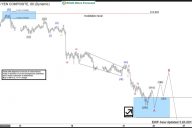While we enjoy a good laugh, the truth is that the first step to protecting ourselves from losses is to protect ourselves from ignorance. Think of the “World Out Of Whack” series as your double-thick armour-plated side impact protection system in a financial world littered with drunk drivers.
Selfishly, we also know that the biggest (and often the fastest) returns come from asymmetric market moves. But, in order to identify these moves, we must first identify where they live.
Occasionally we find opportunities where we can buy (or sell) assets for mere cents on the dollar – because, after all, we ‘re capitalists.
Beware The Attention Seekers!
I’m getting sick and tired of stupidity. No, really. There really are some proper morons out there. Just the other day I read in the Telegraph that living near a busy road raises your chance of getting dementia by 12%.
Being the skeptic grump that I am and taking very little at face value I was curious about this. After all, 12% seemed significant.
15 seconds later (I’m a bit slow) and my stubby fingers had met with my phone to reveal the medical journals stats on dementia. Lo and behold, there’s an 11% chance of getting dementia no matter where the hell you live. Further investigation revealed that the study in question actually showed that the risk of dementia caused by living near a busy road raised the odds TO 12%, not BY 12%. That little fact wouldn’t grab as many readers’ attention, though, now would it.
Key here is the abject failure to distinguish between relative and absolute risk.
Absolute risk is 11% and relative risk, if your pad overlooks a noisy highway with Mack trucks belching fumes out 24/7, increases this by a “whopping” 1.32%.
Think of it like this: Out of 100 people who are lulled to sleep at night by the comforting drone of 18-wheelers this “startling new research” reveals that 12 folks will be affected by dementia rather than 11. Now, I understand that there are those among us who desperately want that last 1.32% of longevity (you can find them scarfing the tofu at the buffet) but personally, I’m not so sure those extra days spent confusing my nurse, who’s changing my soiled diaper with my wife while being fed sludge through a straw, are worth worrying about.
This sort of nonsense happens all the time.
It grabs our attention because our amygdala (that squishy almond shaped part of our brain that deals with fear) goes berserk trying to protect us from pain sending out “watch out, buddy” messages and getting us all lathered up with anxiety. There was a fascinating experiment done on this which I wrote about some time ago.
In any event, the headlines for this “startling” piece of trivia on dementia sound frightfully scary but are actually complete bollocks. The problem, of course, is that, unless you’re actually knowledgable in a particular area – in this instance medical research (which I’m not) – you’re likely to accept at face value what you see.
The same thing happens to folks evaluating financial markets. All too often there’s a vested interest or bias to selling a particular narrative. When your bread gets buttered running, say, a fixed income fund, it shouldn’t come as a surprise when you’re found searching for metrics supportive of more suckers investors plonking their hard earned dollars into your fixed income fund.
Other times, it’s a matter of simply looking at the trees failing to see that “whoa, we’re actually in a forest” and not using second order thinking.
Recently, I came across headlines screaming that the US stock market was due to crash. Whoa! The primitive part of my brain can’t help itself and kicks into action telling me to quickly find out more. How might I be at risk of being eaten by the lion, it wants to know.
Reading through the article I noted that lo and behold, the author had some “little known” indicator that said it was so. Urghh! Listen, there are NO, none, zero “secret” indicators OK? Nada! There are just indicators, and if you don’t know one, that doesn’t make it “secret”. It just means you don’t know it.
For sh*ts and giggles I read the report and, to summarise, the “indicator” was this:
Household equity ownership was now at the same levels we’d experienced in the 1960s and in 2007. Notably, two previous market peaks. Investors holding equities in both of those periods got their shirts handed to them. Ergo, investors are again going to get their shirts handed to them. Run!
Not so fast, hombre…
Let’s deal with the data first.
Sure, equity ownership in both 2007 and the ’60s was around the 30% mark, which is where we’re at today. And sure, both periods experienced painful stock market crashes, but looking deeper, we find that equity ownership has reached these levels before, most notably in both 1998 and 2013.
Take a look at the S&P500 from 1990 through 2009 below:











No Comments